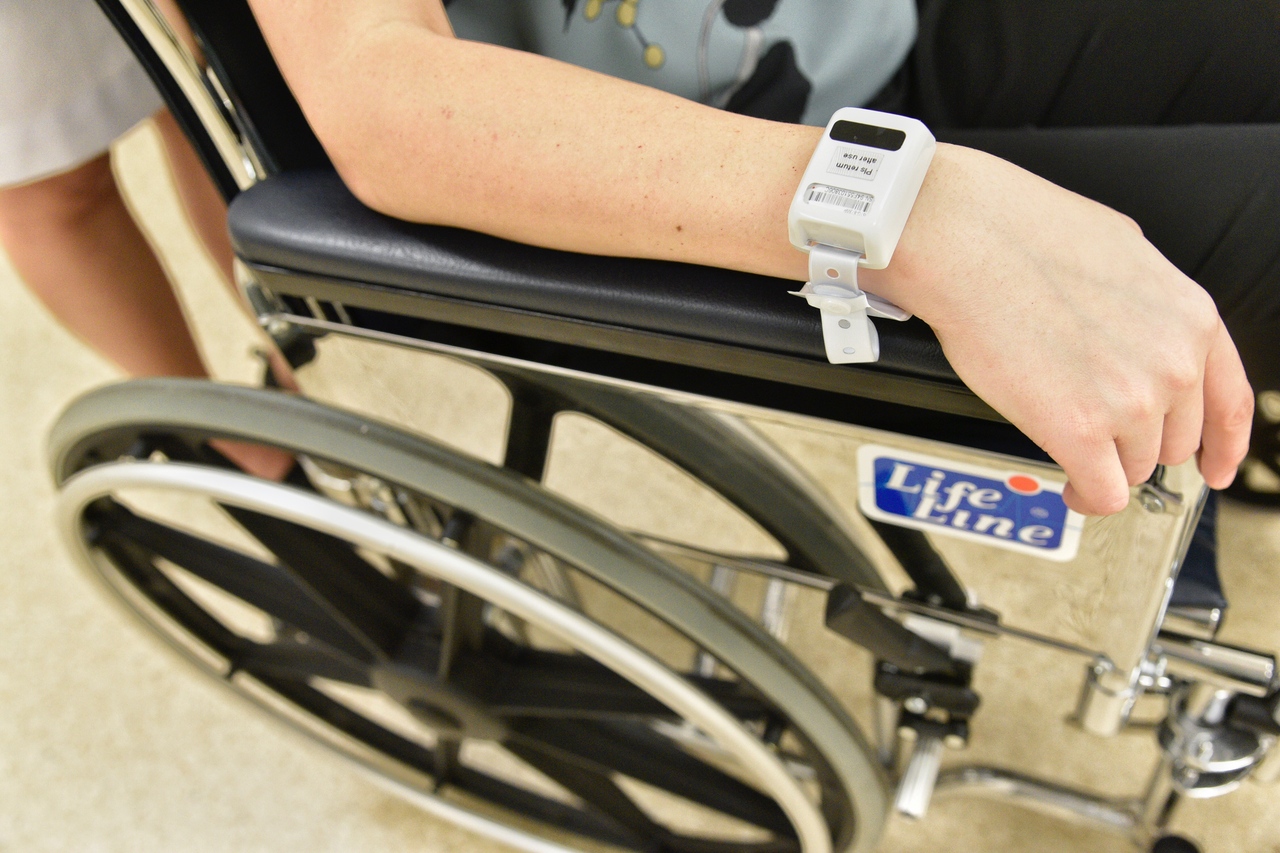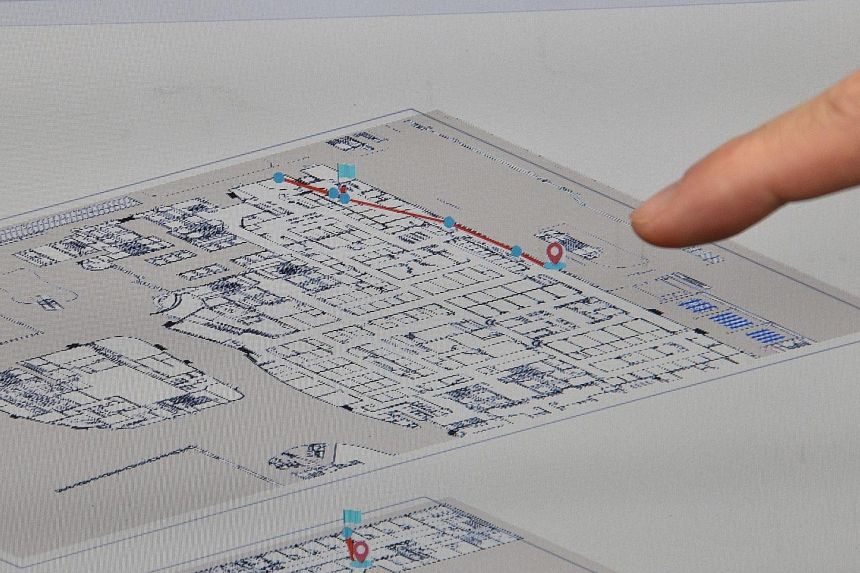Sengkang General Hospital's Real-Time Locating System works by tracing cards issued to hospital staff and wristband devices worn by patients.ST PHOTO: DESMOND WEE
SINGAPORE - Even before the Covid-19 pandemic hit and contact tracing became the norm in Singapore, Sengkang General Hospital (SKH) was already on the trail of people who came in close contact with those who had infectious diseases such as chicken pox and tuberculosis.
But instead of using Bluetooth tech like the Government's TraceTogether tool, SKH has been using a mix of radio-frequency identification (RFID) and Wi-Fi.
The hospital was able to reduce the time for contact tracing significantly by using tech. Previously, one of the steps involved manually checking hospital and patient records, and liaising with various departments, which could take a few hours to a day.
But with SKH's Real-Time Locating System (RTLS), this process can be done in 10 to 20 minutes, it told The Straits Times.
The system was conceived before the hospital opened in 2018.
"We always knew that there was going to be another disease just around the corner after Sars," said Ms Lee Puay Chuan, the hospital's director for strategic projects, referring to the 2003 severe acute respiratory syndrome outbreak.
Sars claimed 33 lives here in four months at the time.
Hence, SKH's building plans factored in contact tracing, including installing devices called "exciters" and setting up Wi-Fi points around the hospital which are part of the RTLS.
The system was piloted with some patients in late 2018 before it was launched in November 2019. All front-line staff, such as those in the emergency department, are now under the RTLS and it is being rolled out to back-office functions.
The timing was fortuitous as the RTLS has been used to help the Ministry of Health with coronavirus contact tracing in SKH. The first recorded Covid-19 case in Singapore was in January last year.
SKH's system works by tracing cards issued to hospital staff and wristband devices worn by patients. Using RFID tech, the cards and wristbands can "talk" to one another so that the RTLS can figure out who a person is in close contact with within a 2m range for a specified period of time.
The cards and wristbands regularly upload the close contact information through the hospital's Wi-Fi network to servers.
Based on the location information from exciters and Wi-Fi points, the RTLS will roughly know where staff and patients are in the hospital and where they go to.
 SKH's system works by tracing cards issued to hospital staff and wristband devices worn by patients. ST PHOTO: DESMOND WEE
SKH's system works by tracing cards issued to hospital staff and wristband devices worn by patients. ST PHOTO: DESMOND WEE
TraceTogether also records close contact data but it does not store location information, unlike the RTLS. Instead, TraceTogether data needs to be paired with the location data from the SafeEntry national check-in tool at venues for contact tracing.
The RTLS information is used during the contact tracing process to help jog people's memories of where they went, similar to how TraceTogether data is tapped.
The system has safeguards to protect the privacy of staff and patients, according to Ms Lee.
The location information reveals only the hospital zone a person is in, such as wards, but not the washroom in a ward.

SKH's contact tracing tags provide a timeline of a patient's journey and activities on the premises. ST PHOTO: DESMOND WEE
The RTLS data is accessed only when necessary, which in this case would be for infectious disease contact tracing. Access is restricted to specific personnel and there are audit trails to monitor who retrieved the information.
The Wi-Fi network to upload the data is also secured and not public, assured Ms Lee.
The contact tracing data transmitted is coded and appears as a jumble of numbers.
She said the RTLS is not just to protect patients by helping to quickly identify close contacts of infected people and limit the spread of a disease.
"Staff must also be assured that they are working in a safe environment," she added.
Using contact tracing technology beyond Covid-19 and hospitals
Beyond tracing close contacts of people with Covid-19 or other diseases, Sengkang General Hospital uses its real-time locating system for other purposes, like tracking equipment.
Wheelchairs and infusion pumps, for example, are tagged so that staff can easily keep tabs on where these items are, and find out if there is a shortage.
This cuts down on the need for time-consuming manual checks. The hospital also does not need to buy so much equipment to keep as spares in case items cannot be quickly found at a moment’s notice, it told The Straits Times.
Some Covid-19 contact tracing solutions are also being used for non-pandemic purposes.
Supply chain solutions company TagBox developed contact tracing tags for construction workers last year under the Infocomm Media Development Authority’s crowdsourcing initiative called Open Innovation Platform.
It is now testing the solution at two construction sites to track staff and equipment, as well as using software to alert supervisors if staff or equipment are in forbidden work zones.
There are also discussions with the public and private sectors on using the software to improve safety, by alerting supervisors when workers enter an area with a high fall risk.
Technology firm TraceSafe is planning to add alarm features with sounds and vibrations to alert workers about dangerous zones and areas they are not supposed to be in, when it starts to deploy its contact tracing tool across five construction sites from the middle of August.
It announced in July that it had signed a global deal with cruise line company Royal Caribbean – which has sailings from Singapore – to roll out the contact tracing solution in its ships.
Aside from Covid-19 tracing, the wristband device, that is expected to be used, can be tapped for contactless entry to passenger cabins and payment at eateries on board the ship.
